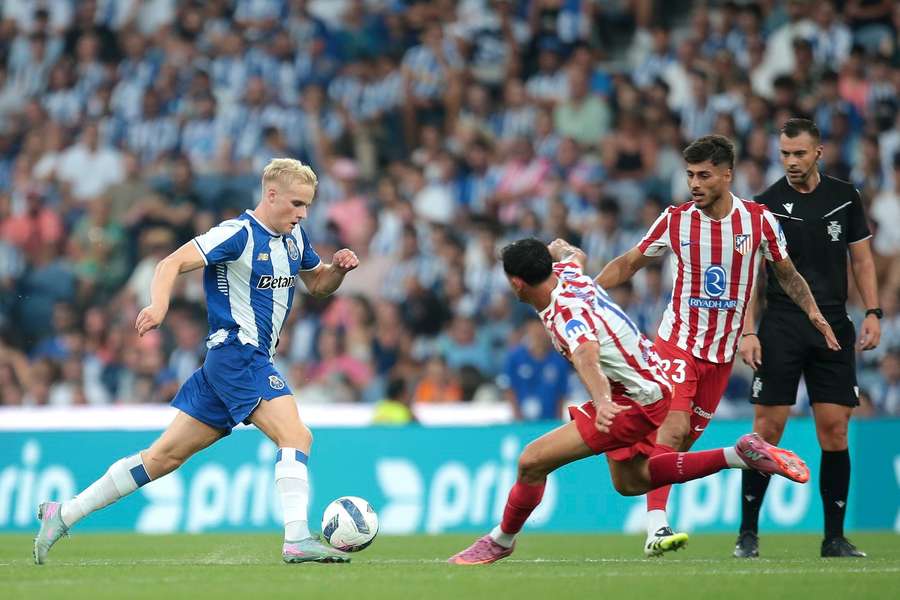Malmo vs FC Copenhagen: How Clubs Compare Financial
With Malmo in the transmission of FC in a huge champion between the Scandinavian giants on Tuesday evening, FlashScore examined how Rule 50 + 1 and further financially favorable Swedish teams, despite the preservation of a unique relationship between fans and clubs.
When Malmo FF took over FC Copenhagen In the qualification for the Champions League in 2019. It was the first UEFA engineered ever between the two sides from different countries that were in such a close proximity.
It has only 38km from Malmo’s Elees to the FC Copenhagen Stadium, divided by the Oresund Bridge, the longest combined railway and road bridge in Europe. But while the train or traveling by car between two cities can be made in just half an hour, two clubs are in football conditions.
FC Copenhagen directly opposite Malmu
In Sweden, rule 50 + 1 requires professional football clubs that are owned by a member, including Malmo. FC Copenhagen are direct opposite and are considered Sweden as beautifying everything that is wrong with modern footballs as a club that rely on private investments after the 1990s are between B1903 and KB, two clubs with an extensive history in Danish football.
Their business ventures, which was almost bankrupted in early years, Denmark Police, which led to the owner and president of the Flemming Oestergaard, a sentence of a million pounds and entertainment prices in 2008. Years.

Danish champions dwarf malma in terms of investment
Since then, FC Copenhagen has grown into a financial giant in Scandinavia and can boast of player beaches and transmission fees that are their closest competitors, FC MidtjyllandMalmo, They will / glymthetc., can only dream.
When it comes to players’ salaries, Copenhagen’s salary of 47.5 million dwarfs of those from Norwegian and Swedish clubs, and Malmo’s rifles have been reached 24.5 million euros.
And while Malmo has set up a new reception reception when Strasbourg signed Sebastian Nanasi Last season for 11m euros, FC Copenhagen doubled that amount when FC Porto signed Danish international conjunction in late July Victor Froholtt.
After several times, qualified for the Champions League, the financial potential would be huge to enter a lucrative partnership with external investors, but Rule 50 + 1 blocks all those dreams.
“With a structure that exists in Sweden, an external investor can never have an impact determined in Denmark,” Explains an expert in Ph.di sports business expert, Kenneth Cortsen, from UCN to FlashScore.

“Potential investors could make a world of difference in Allsvenski”
“There is no doubt that potential investors who could be financially made in the world difference from the partnership entry when they see the way things are organized in Sweden.
“Swedish clubs in general struggle for attracting the same type of financial investment to see in Denmark.
“You can only point to the right to the development of the Sanova transformed FC Nordsjaelland and how the Brentford Matthew Benham’s owner has transformed FC Midtjylland. Those cases do not exist in Sweden,” Adds Cortsen.
In 2009. year, the controversial model 50 + 1 was close to the abolition when the Swedish football associator supported a proposal for removing the rules and thus open the door for the ownership clubs.
However, Svenska Fotbollssupporonen (SFSU), the roof organization for groups of supporters through the clubs in the first two departments, which was then recently formed, launched severe protest campaigns against the move and eventually encouraged Swedish FAU to cross its decision.
Memberships and the presence of the crowd are on the rise
This marked the beginning of support for support in which fans have taken pride protection of the integrity of the relationship between clubs and fans, although inadvertently worsened marketing and commercial options for allsvenskan clubs and commercial options.
This encouraged membership and the presence of a crowd to grow. “Ultras’ culture was formed with tifovi, piro and noise, which essentially reflected the loyalty to individual clubs and pride create a platform for a unique relationship with the clubs you will find only in very few places in the world.
“Clubs in Sweden have a strong connection with fans – and local area because members have a high degree of influence“” Cortsen says.
“The link in the local community is more traditional, not as ads as in Denmark. Danish clubs can quickly accelerate growth through investments, while Swedish clubs are more dependent on the capital generation specification.
‘Greater readiness for risks among Danish clubs’
“There is also a greater readiness from the risk clubs in Denmark due to the possibility of capital injections.
“FC Midtjylland and FC Copenhagen bought an even more expensive player and were more willing to take the financial risks for the qualification for the European club competition” Cortsen concludes.
Swedish clubs are apparently occupied by a stand against sports conquest, state ownership, hedge funds and rampanic capitalism that could jeopardize their unique relationship with their clubs. But there is a large price to pay.
Swedish fans indicate the fact that Djurgarden Whether he managed to reach the semifinals of the conference league, but perhaps he says more about the missing quality on that tournament but about the progress of Swedish football.
Allsvenskan is now UEFA 23.-ranked league and that is unlikely to be improved. The question is now, will Malmo become the next injury in Swedish adoration of Rule 50 + 1?